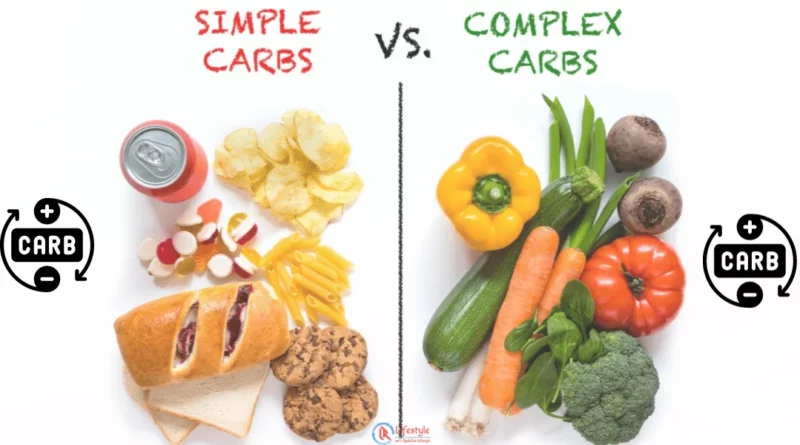Exploring Simple and Complex Carbohydrates (Carbs): Everything You Need to Know
Carbohydrates the Energy Booster
Carbohydrates, often referred to as “carbs,” are an essential part of our daily diet and it provides energy to our body. They are one of the three macronutrients, alongside proteins and fats. However, within the realm of carbohydrates, there exists a crucial distinction: Simple Carbs and Complex Carbs. Let’s understand what sets them apart.
Simple Carbs: The Quick Energy Source
Simple carbohydrates, as the name suggests, are made up of just one or two sugar molecules. They are quickly digested and absorbed by the body, leading to a rapid surge in blood sugar levels. Foods rich in simple carbs include sugars found in fruits (fructose), table sugar (sucrose), and milk (lactose).
The Upsides of Simple Carbs:
Quick Energy: Simple carbs are the go-to source for a rapid energy boost.
Post-Exercise Recovery: They can aid in replenishing glycogen stores after a workout.
The Downsides of Simple Carbs:
Blood Sugar Spikes: They can cause a sudden spike in blood sugar levels, followed by a crash.
Empty Calories: Often lack essential nutrients and fiber.
Examples of Simple carbohydrates
Simple carbohydrates are found in foods such as:
- Sugar
- Honey
- Maple syrup
- Corn syrup
- White bread
- White rice
- Pasta
- Candy
- Soda
- Juice
Complex Carbs: The Sustained Energy Providers
On the other hand, complex carbohydrates are more intricate in structure, comprising long chains of sugar molecules. The body takes longer to break them down, leading to a slower and steadier release of glucose into the bloodstream. Foods like whole grains, legumes(such as Beans, peas, and lentils), vegetables, and fruits with fiber fall into this category.
The Upsides of Complex Carbs:
Sustained Energy: They provide a longer-lasting source of energy.
Digestive Health: Rich in fiber, aiding in digestion and promoting a sense of fullness.
The Downsides of Complex Carbs:
Digestive Issues: Excessive consumption can cause bloating or digestive discomfort.
Calorie Dense: Portion control is essential, as they can be calorie-dense.
Examples of Complex carbohydrates
Complex carbohydrates are found in foods such as:
- Whole grains
- Fruits
- Vegetables
- Legumes (such as Beans, peas, and lentils)
- Nuts
Striking the Right Balance
The key to a healthy diet lies in striking a balance between simple and complex carbohydrates. While simple carbs can be beneficial for quick energy, they should be consumed in moderation. On the other hand, complex carbs should form a substantial part of your daily intake for sustained energy and overall well-being.
Tips to Maintain Balance:
Prioritize Whole Foods: Opt for whole grains, vegetables, and fruits with their natural fiber intact.
Control Sugary Snacks: Limit sugary snacks and beverages to occasional indulgences.
Mind Your Portions: Be mindful of portion sizes to prevent overconsumption.
Some key things to know about simple and complex carbohydrates:
- Complex carbohydrates are generally healthier than simple carbohydrates. They are higher in fiber and nutrients and provide sustained energy.
- Simple carbohydrates should be consumed in moderation. Eating too many simple carbohydrates can lead to health problems such as obesity, type 2 diabetes, and heart disease.
- It is important to choose the right carbohydrates for your health. Focus on complex carbohydrates that are high in fiber and nutrients. Limit your intake of simple carbohydrates, especially those found in processed foods and sugary drinks.
Note: Understanding the differences between simple and complex carbs empowers you to make informed choices about what you eat. Remember, a balanced diet with a variety of foods is the cornerstone of a healthy lifestyle. Also, if you have any kind of illness or disease you should first consult your doctor before choosing the right proportion of carbohydrates.
Also Read:
For News related to entertainment visit our entertainment website:
https://www.glamworldtalks.com/



